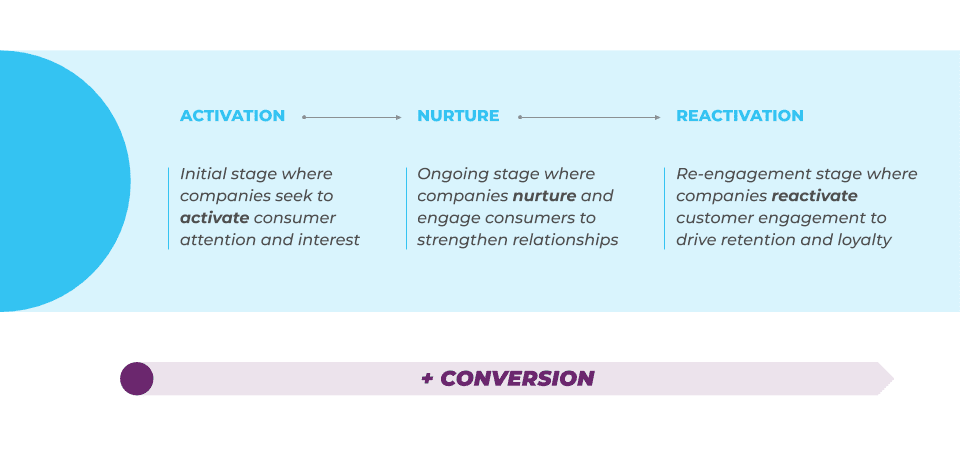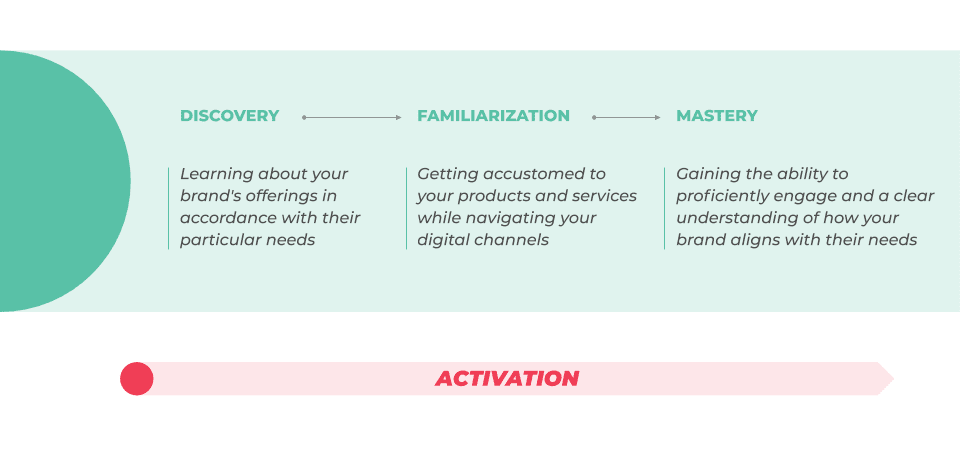Who, what, when, where, and why—commonly referred to as the “5 W’s,” are questions whose answers possess the needed information, context and perspective for basic problem-solving. It’s a painlessly simple framework for learning and lends itself perfectly to the concept of…individualization.
Stay with us here!
Looking at individualization—otherwise known as one-to-one personalization—through the lens of the 5 W’s ensures that your brand’s marketing carefully takes your customers’ past histories, present needs, and future successes into consideration.
In this post, we’ll explore each of the 5 W’s and discuss the roles of each as part of an individualized customer experience.
Let’s get started.
The Why: Giving Purpose to Your Customer Experience
Just like Simon Sinek says, start with the Why. The obvious why for a business when it comes to individualization, as in, “Why individualize this message” is clear: to drive a higher conversion rate. But that’s a short-sighted endgame, and we can certainly hold ourselves to higher standards.
Let’s reframe the Why from your customer’s perspective—Why does this particular message matter? Why should they specifically care? Why is it enhancing their current experience?
Research shows that engaged customers are worth 23% more than your average customer. Positive brand sentiment starts with individualized marketing—with high levels of interactions and engagement, customers evolve into brand ambassadors.
By answering these questions of Why upfront, we gain a deeper understanding of the intent that drives every message. Instead of putting your company first and prioritizing short-term gains, you’ll instead make a stronger case for a long-term relationship.
How to Find Your Message’s Why:
- What specific value does this intended message deliver?
- How will this message move your customer’s experience forward?
- What will this message do for the customer that they couldn’t have done for themselves?
The Who: Centering the Narrative on the Individual
Every great story revolves around a primary character—your marketing messages should, too. We already know that our customers desperately crave personalized attention. 91% of consumers choose the brands who know what they like. That’s great news for marketers! This goal is easily attainable with the right infrastructure in place.
Audience segmentation is the first tactical step toward content individualization. Carefully filtering by customer profile data yields specific audiences who are likely receptive to certain messages (e.g. new users and welcome campaigns).
Like they say: “Play to your audience.” This is a big step in eliminating the guesswork from content development—with a specific Who in mind, you can better anticipate the characteristics, intentions and motivations of each customer and match them with relevant content.
How to Speak to Your Message’s Who:
- How will this message acknowledge who your customer is?
- What message elements will reflect your customer’s needs?
- How will this message be tailored to this customer’s current situation?
The When: Targeting the Specific Lifecycle Stage
Next, let’s identify “when” your audiences will receive your message. It’s easy enough to group the lifecycle stages into three distinct categories:
- Activation – Initial stage where companies seek to activate consumer attention and interest
- Nurture – Ongoing stage where companies nurture and engage consumers to strengthen relationships
- Reactivation – Re-engagement stage where companies reactivate customer engagement to drive retention and loyalty.


Which stage of the lifecycle will your message be targeting?
Naturally, customers receive different campaigns at different stages of their journeys. These campaigns’ goals should appropriately align with each stage’s overarching objectives.
For example, an Activation objective might include building trust so that your new customers feel confident enough to share their personal data and build out their profile—this could be accomplished with a meaningful welcome campaign.
Careful planning and prioritization will help your different audiences overcome their biggest stage-specific hurdles. Maybe it’s an onboarding email campaign encouraging your customer to download your app—personalizing the additional value they’ll get from an app-enhanced experience can subsequently help you achieve your goals with less friction.
It’s a When-Win situation: Your customers have a better experience and progress to the next leg of their journey. The next When and the next win for your brand.
How to Target Your Message’s When:
- What do I want my customer to achieve in this stage?
- What actions must your customer take before moving to the next stage?
- Which precursory steps taken can you acknowledge?
The Where: Pinpointing Conversion Milestones
As mentioned above, there are friction points along the customer’s When or specific lifecycle stage. We throw the term “milestone” around quite a bit, but today we’ll use it for contextualizing the Where—the small interactions that comprise a customer’s experience and build brand credibility.
For example, there are multiple stages of Where you can develop during a customer’s initial onboarding. Dovetailing off the example we just brought up in the previous section, just because a potential customer has now downloaded your app doesn’t necessarily mean that they’re ready to buy.
Each lifecycle stage has a story with a beginning, middle and end. You could, for instance, break the Activation stage into three smaller phases of engagement, or Where the customer is in the story:
- Discovery – Learning about your brand’s offerings in accordance with their particular needs
- Familiarization – Getting accustomed to your products and services while navigating your digital channels
- Mastery – Gaining the ability to proficiently engage and a clear understanding of how your brand aligns with their needs
Knowing exactly Where they are in relation to the story of each lifecycle stage makes content personalization much easier.
It also ensures, once again, that the individualized marketing you’re sending is appropriately mapped to meet customer expectations.


Make sure your messages are meeting customers Where they are.
Identifying Your Message’s Where:
- What context do I need to properly align this message?
- What customer interactions need to happen for this message to land right?
- What’s the optimal situation for the customer to receive this message?
The What: Delivering Meaningful Content
And, finally, we’ve reached the “what” of individualization. As Bill Gates famously said, “Content is King.” When most people think of individualization (and even personalization as a catch-all umbrella term) it’s usually content that comes to mind first.
Content is the most overt component of individualized marketing. But as we’ve just pointed out, individualized content is inherently linked to so much more. Personalizing the different elements of content—the copy, images, layouts, CTA, and beyond—needs to have a connection to the recipient.
Part of the reason we’re able to do that effectively is because we’ve comprehensively addressed the Why, the Who, the When, and the Where. We gathered the understanding and necessary context to create the specific What. To a degree, content itself is almost always a result of the four other W’s.
Conveying Your Message’s What:
- How can the copy and content reflect the individual?
- Which images can I use to draw attention and evoke familiarity?
- Which specific recommendations and products align with this customer’s interests?
How Individualization Happens
To accomplish this degree of individualized marketing accuracy, you must be able to freely wield your customer data. As discussed, most—if not all—answers to the question of “What should I send my customer?” lives inside your customers’ profiles. Now it’s up to all of us to put that data to use and deliver the experiences our customers want!
To learn more about Iterable’s capabilities to enable individualization, sign up here for a customized demo.





























